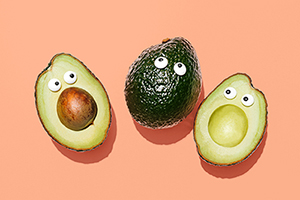A trio of food stories caught my eye this week . . .
Turning breakfast cereal into a bedtime snack: A problem for the food industry is that there are only a finite number of mouths available to eat breakfast. Demographically, the percentages of kids and teenagers are declining. Sales of breakfast cereals are, in essence, capped out. Especially because more people are turning away from sugary, high-carb morning meals, which are known to produce a roller-coaster effect on blood sugar, setting the stage for increased appetite and poor food choices later in the day. Once demonized as sources of saturated fat and cholesterol, eggs are regaining their rightful place as high-protein, satiating breakfast choices.
How then, to reinvigorate the market for these high-margin, cheap-to-produce processed cereals?
Credit Big Food for creativity. They’ve rolled out a campaign for Sweet Dreams™️. A headline announces, “Post moves from breakfast to nighttime with new sleep-promoting cereal”.
Cleverly capitalizing on the pervasiveness of sleep problems among Americans, lately exacerbated by “Coronasomnia”, Post claims that Sweet Dreams “is the first ready-to-eat cereal designed to encourage a healthy sleep routine while satisfying late-night hunger.” According to recent surveys, a quarter of American adults obtained less than the requisite seven hours of sleep per night, and 15% of adults had trouble falling asleep most days or every day in the past 30 days.
The theory is that hunger pangs interfere with sleep, and that the smattering of vitamins and minerals with a dash of calming lavender and chamomile facilitate relaxation and “support melatonin”.
“For 130 million American adults, a good night’s sleep is elusive. You deserve good sleep, and we want to help you enjoy it! So, we made Sweet Dreams cereal, the first ready-to-eat cereal specially designed to support a good sleep routine and a fresh start to the next day.”
The Nutrition Facts label on Sweet Dreams reveals a cup (who eats just a cup of dry cereal?) yields 230 calories, of which 46 grams are carbohydrates, a third of which (16 grams) come from simple sugars. The packaging states it is “made with whole grains” but it’s not clear how much. Suspect ingredients include sunflower oil, “canola or soybean oil” corn starch and corn syrup, and, of course, sugar.
Most cold breakfast cereals are considered to be—along with bacon, sausage, frozen meals, cookies, and candies—ultra-processed foods (UPFs). As the Harvard Health Blog puts it:
“They most likely have many added ingredients such as sugar, salt, fat, and artificial colors or preservatives. Ultra-processed foods are made mostly from substances extracted from foods, such as fats, starches, added sugars, and hydrogenated fats. They may also contain additives like artificial colors and flavors or stabilizers.”
Consumption of UPFs is associated with many health risks, including cancer and cognitive decline.
No science supports the claim that this cereal will help you fall asleep more easily, stay asleep, and/or wake up more rested. A counter-argument could be made that, for those with susceptibility to hypoglycemia, such a dollop of carbs at bedtime could send your blood sugar plummeting within a few hours, waking you up with a jolt long before the morning alarm sounds.
Additionally, there is now substantial evidence that time-restricted eating—narrowing the window of food consumption to just 10 or even 8 hours per day—confers some of the benefits of fasting. During the non-eating phase, various bodily systems undergo a necessary rest and reboot. A process called autophagy—a cellular clean-up brigade—is upregulated, and senescent cells are removed. Maintenance of autophagy is correlated with longevity and freedom from degenerative disease.
There are only so many hours in the day, and the food industry wants to leverage every opportunity to ply you non-stop with their ultra-processed merchandise.
Feeding Lunchables™️ to our school kids: They come in a plethora of variations: Pizza with Pepperoni, Ham and Cheddar with Crackers, Nachos with Cheese Dips, etc. While a convenience for harried parents, they seem like gateway drugs for bad eating habits later in life. They certainly fit the criteria for ultra-processed foods, described above.
A crisis is looming as childhood obesity and diabetes rates continue to soar, especially among the economically disadvantaged who are prime targets for healthy school meals. Researchers found that:
“. . . the proportion of youth with overweight, obesity, or severe obesity increased from 38% before the pandemic to 45%, and declined by almost 6% in the healthy weight category.”
A new initiative has government partnering with food behemoth Heinz to stock school cafeterias with these offerings. But the nutritional content of store-bought Lunchables was so bad that they didn’t even meet the lax requirements of the USDA, which underwrites the National School Lunch Programs to the tune of hundreds of millions of taxpayer dollars.
The products had to be reformulated to reduce their sodium and sugar, and increase their whole grain, vegetable, and protein delivery. Spokespersons aren’t yet sure whether finicky kids may spurn the healthier versions.
Partnering with ready-made food companies like Heinz is viewed as a solution to the challenge of increased costs for fresh food ingredients and cafeteria personnel.
Isn’t this a new variation on “Government Cheese”?
Keeping Keto at Passover: With the increasing popularity of low-carb dieting, health-conscious Jews face a dilemma at Passover. The traditional Passover meal, the Seder, calls for consumption of matzoh in lieu of conventional baked goods. While unleavened, matzoh is still a wheat product, usually made with white flour. During the meal, matzoh ball soup is consumed, made with matzoh meal, whose sole ingredient is finely ground matzoh—more high-glycemic-index carbs!
Ingenious culinary mavens have come up with an alternative for those who want to enjoy their matzoh balls while maintaining fidelity to keto: “A Non-Kosher Recipe For Lower-Carb Matzoh Balls For Chicken Soup.” The chief ingredient substituting for the matzoh meal? Crushed pork rinds!
This brings up the question of what orthodoxy is it more important to adhere to—Kosher or Keto? It is sometimes said that for every Jew, there are two opinions.
There may be a way to reconcile these seemingly mutually-exclusive options. A traditional Eastern European Jewish delicacy is “gribenes” — deep-fried chicken skins, from Kosher chickens. They bear a passing resemblance to pork rinds. I’m told they can even be used as a bacon substitute in “GLTs.”
Ground up, and using the right mix of ingredients, they might be incorporated into matzoh balls. But would they turn out as light and fluffy as the ones my grandma used to make for Passover?
If you come across additional examples of “foods” that just don’t make sense, don’t hesitate to share them with us via email at questions@drhoffman.net We’ll share some of the best submissions on our weekly Q&A with Leyla podcast.







